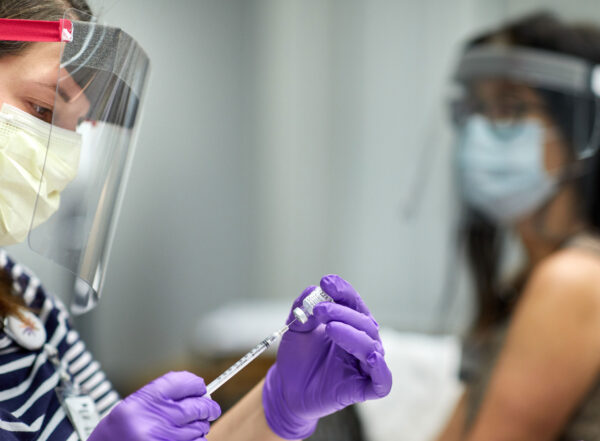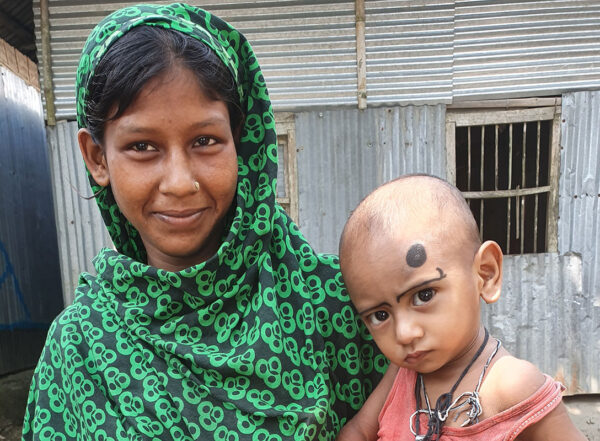Uncovering ‘the basis of humanity’ one puzzle at a time
MD/PhD student creates crosswords for major newspapers
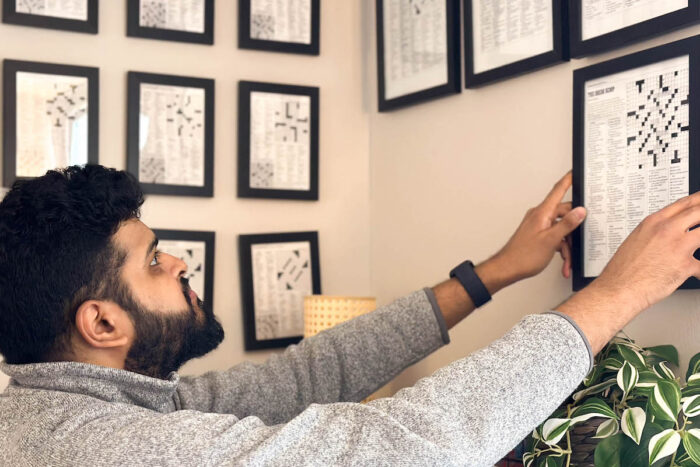 Katie Gertler
Katie GertlerWhen not conducting research involving the brain, Sid Sivakumar, a MD/PhD student at Washington University in St. Louis, creates crossword puzzles for major newspapers such as The New York Times, The Washington Post, the Los Angeles Times and The Wall Street Journal. Sivakumar collects images of his Sunday crosswords and displays the puzzles on walls in his apartment near the Medical Campus.
In the world of word puzzles, Sid Sivakumar is a celebrity.
A graduate student working toward a medical degree and a PhD in biomedical engineering at Washington University in St. Louis, Sivakumar also authors crossword puzzle books and creates acclaimed crosswords for The New York Times, The Washington Post, The Wall Street Journal and the Los Angeles Times. In 2022, he was named the inaugural Wordle Champion after competing against 300 participants in a live version of the popular internet game at the American Crossword Puzzle Tournament in Stamford, Conn.
Last year, at Washington National Airport in Arlington, Va., a wide-eyed, older woman recognized Sivakumar from an online story about prominent crossword puzzle constructors, as they’re called. She approached Sivakumar at a boarding gate and gushed: “Are you the person who writes the hardest puzzles for The New York Times?”
Despite his celebrated puzzle-making and -solving talents, however, the puzzle Sivakumar finds most intriguing may be unsolvable. At least for now.
See here for a PDF of the puzzle to print and fill out.
That puzzle — the human brain — brought Sivakumar to Washington University School of Medicine seven years ago to begin his MD/PhD program in neuroscience and biomedical engineering. Although neuroscience research and understanding have advanced rapidly over the last several decades, many aspects of the brain remain a mystery. However, Sivakumar figured the university’s reputation as a world leader in the neurosciences was his best bet for unraveling the brain’s intricacies.
The three-pound organ houses more than 100 billion cells that transmit electrical impulses responsible for consciousness, thoughts, behavior, intelligence, feelings and movements. “As a neuroscientist, I like to believe the human brain is the most powerful apparatus in the universe,” Sivakumar said. “The brain forms our overall perceptions of life.”
His research inside the university’s Jeffrey T. Fort Neuroscience Research Building probes stroke’s impact on the motor cortex, a crucial part of the brain that controls movement. Sivakumar also helps create electrode devices aimed at rehabilitating movement in stroke patients by interpreting their brain signals.
“I want my research to one day help the patients I treat who have suffered from strokes, epilepsy or other brain disorders,” said Sivakumar, 28, who is on track to earn his PhD from the McKelvey School of Engineering in April 2025 and his medical degree in spring 2027.
“Science and puzzles are both about spotting patterns, understanding systems and making connections,” he added. “An interplay exists between crossword puzzle construction and scientific inquiry that has made me better at both disciplines. But one big difference is puzzle creation is quick enough that I typically find the process relaxing. Unlike scientific research, which can take years, I can construct a puzzle in a few hours or a few days.”
The Inside Scoop: Puzzle published Sunday, Feb. 18, 2024, in The New York Times.
Two vertical answers highlight the theme: “HEARD THROUGH” / “THE GRAPEVINE.” Grapes used in winemaking dangle down an illustrated green vine in the puzzle’s center, while intersecting the vine are synonyms for gossip that must be said aloud to be understood — for instance, “ROOMER” for “rumor.”
Sivakumar uncovers patterns in everyday phrases to structure themes for his crossword puzzles. During a casual conversation last year that involved a bit of gossip, a friend mentioned that he had “heard it through the grapevine.” What it was, Sivakumar cannot recall. But the idiom inspired an intricate dance of grape varieties and terms for gossip on a black-and-white grid to form “The Inside Scoop,” his 17th crossword for The New York Times.
“… Like nice, smooth wine,” a puzzle fan wrote in the newspaper’s comments section.
Sivakumar credits his talent at spotting patterns as key to puzzle making.
Shortly after he learned multiplication in preschool, Sivakumar started noticing numeric patterns. Once, in class, he discovered a quick trick when squaring any two-digit number ending in five.
- Using 35 × 35, for instance, multiply the first digit by the next highest number: 3 × 4 = 12.
- Then times the 5 by itself: 5 × 5 = 25.
- Written one after the other, the two products make 1,225 … which is the answer to 35 × 35.
Excited, Sivakumar explained the math trick to his teacher and mother, neither of whom had heard of it before. He later shared it on a radio program with listeners in Cleveland, near where he lived with his mother, father and younger sister.
At age 6, another pattern appeared to Sivakumar as he paced the perimeter of his family’s kitchen and created equations by multiplying tiles on the floor. At one point, Sivakumar said he turned a rug diagonal to the tiles and explored calculations with triangles. He had never heard of terms such as variables or square roots — however, Sivakumar had unknowingly taught himself the Pythagorean theorem, a formula used to determine the length of an unknown side of a right triangle.
Mathematical patterns continued to appear throughout his childhood. Inadvertently, he taught himself more theorems, such as Pascal’s triangle and the Fibonacci sequence. At times, though, such discoveries felt jarring. Sivakumar’s math skills soared above many adults’; however, he was too young to understand the big picture of how mathematical principles related to the world at large.
“As a kid, I sometimes felt off balance in contrast with my friends,” he said. “But looking at it more positively, my mathematical abilities gave me a glimpse into exploring things that are on the edge of knowledge, things that need to be explained or solved. That’s what scientific inquiry is all about: finding the patterns, asking the right questions, verifying the answers. I find it intriguing and exciting.”
As an undergraduate student at Case Western Reserve University in Cleveland, Sivakumar studied patterns in computational analysis, data science, engineering and neuroscience before earning a bachelor’s degree in biochemistry and a minor in statistics in 2017.
Soon after, Sivakumar moved to St. Louis to begin medical school and study the human brain, with a focus on stroke, a disease that occurs when blood flow to the brain stops, depriving tissues of essential oxygen and nutrients. It is a leading cause of death and disability in the U.S. and worldwide.
For his research, Sivakumar makes use of his skills in pattern analysis. In the lab, he examines healthy brains to determine what normal function looks like and compares them to brains damaged by stroke.
Strokes cause lesions, which are regions of brain tissue that have died. Areas around the lesions brim with cells relearning their roles in the brain’s circuits. “The brain has a key period of three to six months after stroke during which it appears to do most of this reprogramming to regain certain functions that were lost. This means we have a significant time window to try new therapies and treatments,” he said.
Sivakumar’s perspective as a neuroscientist adds depth and creativity to his puzzles, with not only phrases borrowed from science and medicine but also fresh themes, clever wordplay and occasional illustrations within a puzzle grid, said Will Shortz, The New York Times’ famed crossword editor and the host of NPR’s “Sunday Puzzle.”
“Sid creates extraordinary, detailed, first-class puzzles,” said Shortz, who is recovering after suffering a stroke in February. “Not many people can do what he does. He is brilliant.”
Meeting Friends: Puzzle published New Year’s Eve, Dec. 31, 2023, in The Washington Post.
Shaded words cross perpendicularly, revealing names of dog breeds when spoken aloud, such as “CALL” + “LEE” = “Collie.” Two answers on each side of the puzzle reveal two aspects of the theme: “HEARING DOGS” and “CROSSBREEDS;” while seven letters at the intersections of the shaded words spell out a bonus answer of “LEASHES.”
A dog lover, Sivakumar was stopped at an intersection last year near the Medical Campus when he spotted a woman standing on the corner surrounded by several dogs she had on leashes. “I thought to myself, ‘I don’t know the wordplay or how I’ll relate this visual to a crossword, but I’m going to make a puzzle to remind me of this moment.’”
Later that day, different dog breeds sprang into his mind, as did wordplay on those names.
The dog-inspired puzzle, titled “Meeting Friends,” was Sivakumar’s first puzzle for The Washington Post, and, like his others, it wowed the crossword puzzle crowd with its complex and interconnected layers of wordplay.
“It astonishes me that it’s even possible for normal humans to create puzzles like this,” an enthusiast wrote in the newspaper’s online comments section.
Successfully creating a crossword relies on understanding a puzzle both as an art form and as a system of interdependent parts, Sivakumar explained.
“One of the key principles in constructing a crossword is to understand that any change made in one section of the grid will have a ripple effect on other sections of the grid,” he said. “It’s usually not possible to change just one answer without changing many other answers, or possibly an entire section of the grid. This system-level understanding of how each puzzle works is vital to building a crossword grid. Without that core understanding, it can take five or 10 times longer to construct a crossword, and the results will probably end up being worse.”
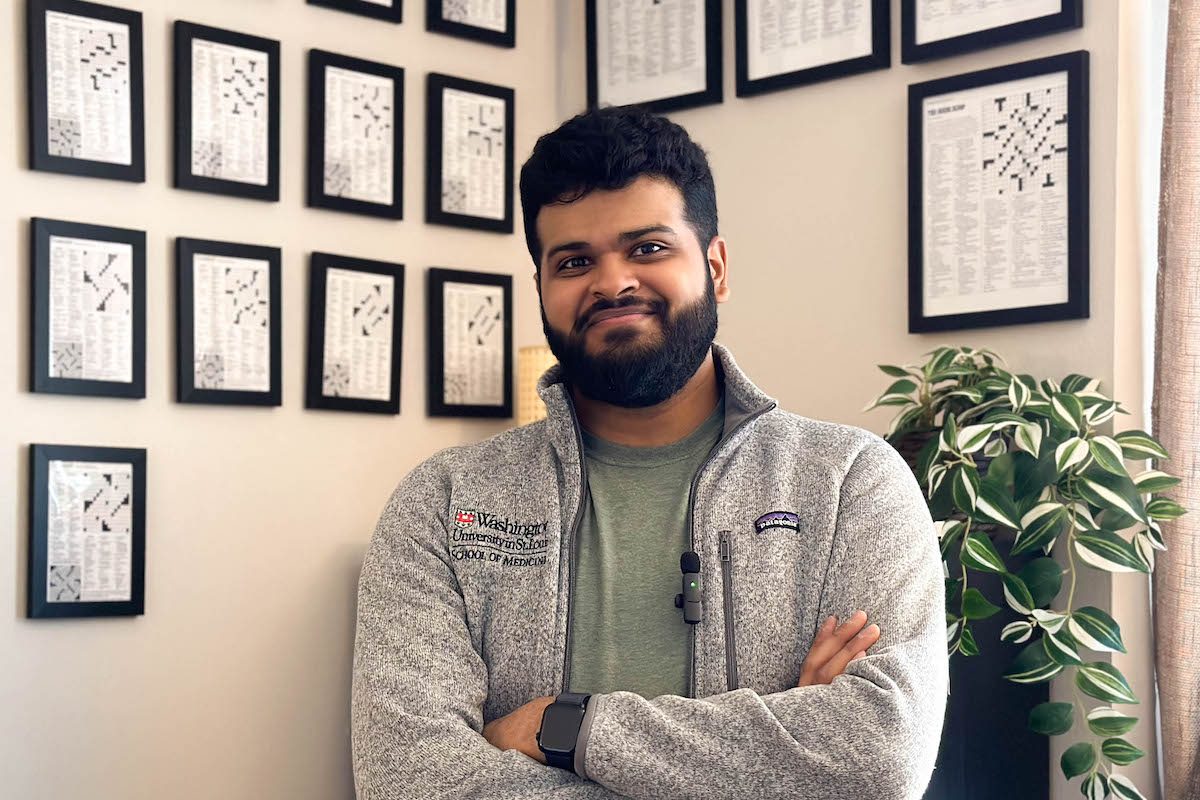 Katie Gertler
Katie GertlerSimilarly, understanding societal systems, with the intent to improve them, particularly those in health care, also interests Sivakumar.
“I’m someone bothered by unsolved problems and inefficiencies,” he said. “This was true even when I was a child.”
One of the systems that troubles him most is health inequity spurred by racism, poverty and other social and economic factors that can negatively affect health. “Depending on where you live, your ZIP code might matter more than your genetic code,” Sivakumar said. “Similarly, a doctor can’t measure emotional or racial trauma with a blood test. Understanding these influences is critical to practicing trauma-informed medicine and treating patients effectively.”
He believes that inequities contribute to medical problems that could be avoided or lessened. “Such as, this person didn’t learn safer sex practices at school or in the home and now has a sexually transmitted infection and a higher risk for certain types of cancer,” Sivakumar said. “Or this person doesn’t have access to nutritious food and now suffers from obesity or diabetes caused, in part, by having to rely on the inexpensive fast-food places in their neighborhood.
“As a future physician-scientist who plans to provide clinical care, I owe it to my patients to understand how their health is impacted by different threads in their lives. Treating a patient requires much more than treating a diagnosis.”
In the lab, Sivakumar approaches stroke by considering the impacts it has on the brain as a system but particularly how it affects the motor cortex.
He also studies how the motor cortex interacts with brain-computer interfaces, technologies that relay electrical impulses between thousands of brain cells and an external device such as a robotic limb. In the context of stroke rehabilitation, brain-computer interfaces are intended to help reprogram brain cells and regain movement after a stroke.
“Sid is an outstanding scientist dedicated to his research that may one day help stroke patients,” said one of Sivakumar’s primary advisers, Eric C. Leuthardt, MD, the Shi Hui Huang Professor of Neurosurgery and director of the Division of Neurotechnology in the School of Medicine’s neurosurgery department. “He brings a lot of multidisciplinary insights to the lab with his analytical skills, deep knowledge and emotional intelligence. I think the world of Sid.”
Alternate Endings: Puzzle published Sunday, May 14, 2023, in The New York Times.
The puzzle features five yellow road signs in the grid, indicating locations where drivers in two lanes take turns converging into one lane. These “ZIPPER MERGES” are depicted five times in the grid, as the ends of two vertical answers merge, alternating letters, to form a third vertical answer that is also a real phrase.
Wayne M. Yokoyama, MD, and his wife, Lynn, boast a four-year streak of completing daily New York Times crossword puzzles together (with only occasional help from the dictionary). Their morning routine entails drinking coffee and solving the crossword.
However, one Sunday a while ago, the couple became stuck on a crossword puzzle and feared their streak would end. Sunday puzzles often proved challenging. But even for a Sunday, the puzzle seemed exceptionally difficult.
Later, Yokoyama read a Times’ feature about the crossword constructor responsible for the day’s puzzle.
“That’s when I made the connection that Sid had created the puzzle,” said Yokoyama, director of Washington University’s Medical Scientist Training Program, the MD/PhD program in which Sivakumar is enrolled. “I sent an email teasing him for making us struggle, but mostly I congratulated him. He’s amazing.”
Yokoyama said he isn’t the only puzzle aficionado at the medical school. He knows of several scientists who solve crossword puzzles daily. But the only constructor he knows is Sivakumar, who, incidentally, can solve many standard-size crosswords in under five minutes. He just enjoys making them more.
“It makes sense that crossword puzzles appeal to scientists,” said Yokoyama, also an associate dean, director of the Division of Physician-Scientists, and the Sam J. Levin and Audrey Loew Levin Professor of Arthritis Research. “When solving and creating crosswords, you must think about things differently than what seems obvious. That’s true of science, in general. If solutions were obvious, there would be no need for experiments. You usually have to think a little bit sideways and out of the box. That’s why it takes a while to make scientific discoveries, because the answer is often not the most obvious.”
Sivakumar acknowledges he’s a sideways, out-of-the-box thinker in science and puzzle-making. For example, the concept for “Alternate Endings,” his 15th puzzle for The New York Times, came to him one evening last year while merging onto the westbound lane of Highway 40/Interstate 64 in St. Louis. The experience inspired Sivakumar to build roadways, complete with yellow traffic signs, on a crossword grid.
“Crossword puzzles are about making connections — in ‘Alternate Endings,’ for instance, the solver needs to realize that the yellow merge signs indicate not only a real-world driving maneuver, but also a form of wordplay,” Sivakumar said. “Dr. Yokoyama is correct. In science, it’s about observing everything, including the less obvious. Science and crosswords also necessitate understanding relationships, whether between cells, people, or words in a grid.”
Sivakumar’s love of crosswords developed in elementary school, when his mom gave him cryptic crosswords from The Hindu, an English-language newspaper based in India. He started making his own puzzles on paper and hasn’t stopped since. All told, Sivakumar has constructed nearly 300 puzzles; of those, he’s published about 200 in newspapers and online publications. On top of those, he’s crafted another 60 that he’s published in puzzle books.
Among his goals in penning puzzles is to diversify their content, a growing movement in the puzzle world.
The son of immigrants from India, he is known for writing clues referencing South Asian culture, including cuisine, religion and the arts.
“I always try to improve the cultural diversity of the crossword puzzle as an artistic medium, to better represent the diversity of the audience who solves puzzles,” Sivakumar said. “Food is a great unifier across cultures, so I often incorporate South Asian foods and ingredients into my puzzles. I also try to include names of Black and brown people, and LGBTQIA+ people and terms, as these are some of the traditionally underrepresented groups in crosswords, and they deserve recognition and representation.”
Deciphering the patterns, systems and connections for crossword construction has provided Sivakumar with a richer understanding of humanity. “I’m not trying to be too sappy or philosophical, but creating crosswords is the most extensive endeavor I’ve undertaken in terms of expanding my outlook of what humanity is,” he said. “The experience has educated me in fields of social sciences, history, geography, the arts and culture. It’s made me think deeply about issues of race, gender and historical systems of oppression.
“I know my passion for word puzzles will enhance my skills as a physician,” he said. “I also know crosswords have already made me a better scientist — especially one learning about the brain, the basis of humanity itself.”
SPOILER ALERT: See here for a PDF of the crossword puzzle with solutions.
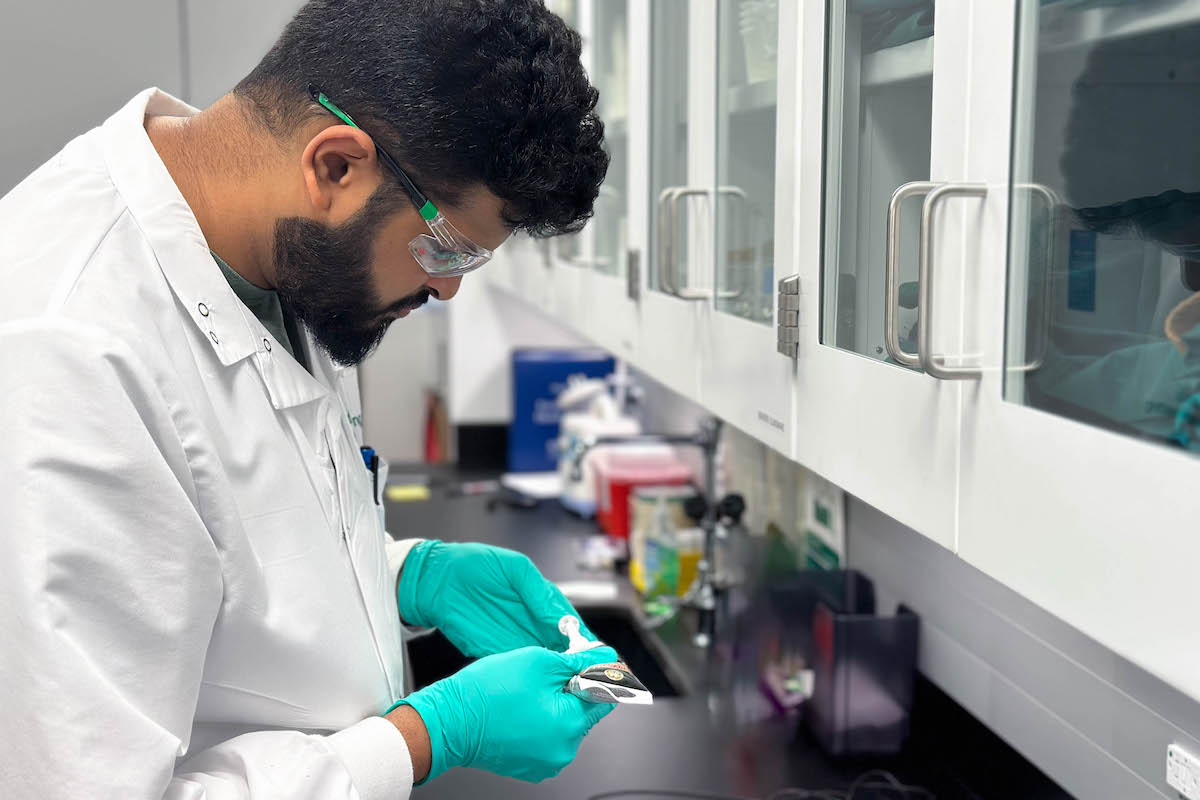 Katie Gertler
Katie Gertler





